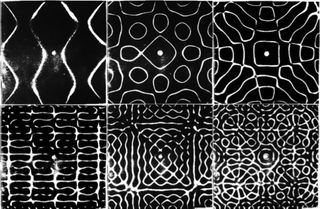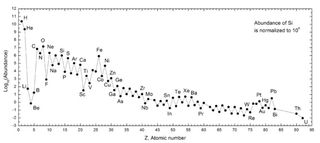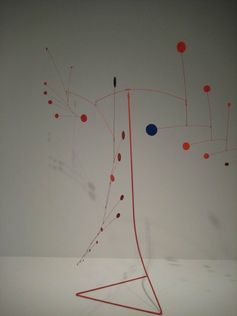
Science Reveals Nature's Hidden Beauty – Artists Should Revel In It (Op-Ed)

This article was originally published at The Conversation. The publication contributed the article to LiveScience's Expert Voices: Op-Ed & Insights.
Nature yields hidden fruits – beautiful patterns and basic relations that make our world. These and the adventure of the human mind in discovering them seem to me a great unharvested source of wonder for art.
These hidden patterns have long threads. The physicist sees them on earth and extends them across space and time to understand the motion of the heavens and the early life of the universe. She also sees a pattern in one place and recognises that the same thing occurs in an entirely different setting. The pleasure of this is not hard to imagine.
Here is a powerful opportunity, and yet art is almost absent from a whole area of wonder.

Consider these intriguing patterns generated by chalk dust on metal plates, each vibrating at a particular resonant frequency. We have long known about this phenomenon. Astoundingly, in the 1930s we found similar formations describe the workings of the atom in quantum mechanics. This helped us explain many things including the characters of all the elements and the way light and colour are brought to the world.
Nature reuses beautiful patterns and we have evolved pattern-seeking brains that travel from a dust covered oscillating metal plate to the atom. Once these patterns are understood, the possibilities for the artist unfurl.
Take this zigzag pattern, for example, which shows the abundance of all the elements making up our solar system, all of them made in the Big Bang and stars. The elements are ordered from left to right by the number of protons, the elemental building blocks, each atom contains. The vertical axis tells us the abundance in powers of ten, so we see huge differences in the amounts of each.
Sign up for the Live Science daily newsletter now
Get the world’s most fascinating discoveries delivered straight to your inbox.

Immediately, visually, it is an interesting thing, raising many questions. What is behind the striking zigzag for odd and even numbers, the marked decrease from left to right, and why these unexpected highs and lows? With the help of a scientist, an artist can discover essential ideas about the character of matter and begin to throw light on the history of the universe and the workings of the sun. For the artist this offers new roads for the mind to travel, fresh metaphors, more questions, including the burning one, how can we share nature’s beauty with more minds?
It seems that few artists use art to accurately and expressively reveal deep ideas about nature. I go back to the 1940s: the design duo, Charles and Ray Eames made poetic explanatory films including “A Communications Primer” and “Powers of Ten”; and Alexander Calder, the engineer turned sculptor, created immaculate weightless figures revealing the forces enabling them and the repeated patterns in nature.

What are the essential ingredients to working this way? The artist will embrace curiosity as the scientist does, he is discovering the world, rather than looking for science for his art. He will try to learn as much as possible, engage with the scientific analytical approach and appreciate the history. The scientist will step away from her usual protocols and consider how to communicate with the foreigner. She will test her understanding by entering a world of colour, pictures and words, bringing the hidden world she understands into the sensory one. Together they will uncover unifying themes and find ways to say things differently, so that more minds can share in the beauty of nature’s methods, the adventure of the imagination, and the richer perspective that all this brings.
Nature offers valuable hints for art, science and life. Take the phenomenon of resonance. Everyone knows what this is in life: when you hit it off with someone, have the perfect day or find a poem with a form exquisitely echoing the idea. Maybe the greatest art and science is achieved when the form brilliantly echoes the idea and the happiest most fulfilled lives are lived when we shape them to match ourselves.
While scientists are busy discovering new things, the opportunity only grows to express the marvellous things we know in new ways to reach more minds. Here lie clues for the education of children, adults and scientists, a way to enrich all of our lives with deep understanding and the celebration that we are this tiny, but brilliant, point of consciousness able to appreciate and talk about it all. It’s time artists step in.
Geraldine Cox does not work for, consult to, own shares in or receive funding from any company or organisation that would benefit from this article, and has no relevant affiliations.
This article was originally published at The Conversation. Read the original article. The views expressed are those of the author and do not necessarily reflect the views of the publisher. This version of the article was originally published on LiveScience.













